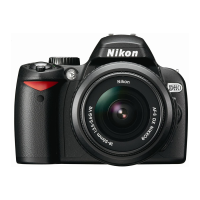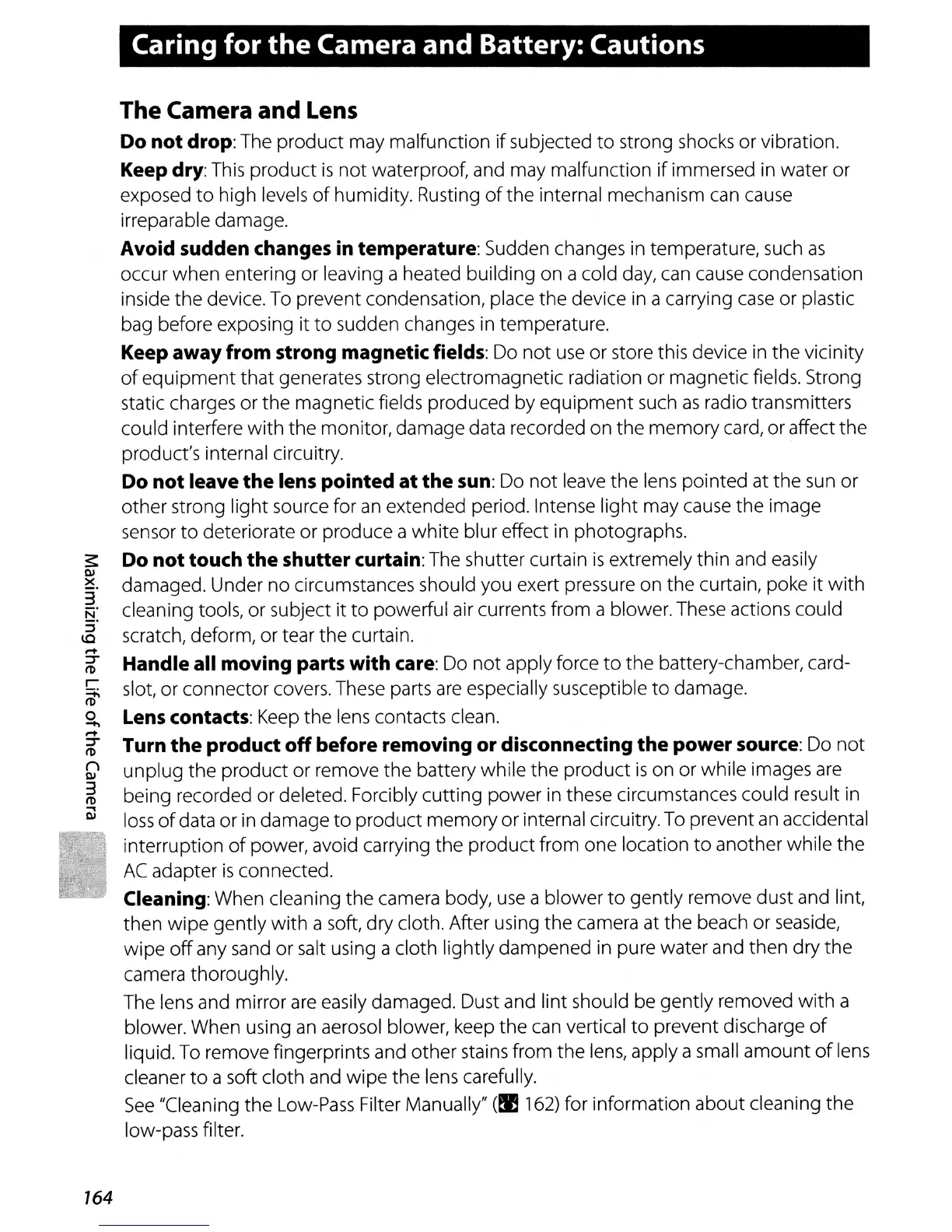Caring for
the
Camera and Battery: Cautions
The Camera
and
Lens
Do
not
drop: The
product
may malfunction if subjected
to
strong shocks
or
vibration.
Keep dry: This product
is
not
waterproof, and may malfunction
if
immersed in water or
exposed
to
high levels
of
humidity. Rusting
of
the internal mechanism can cause
irreparable damage.
Avoid sudden changes in temperature: Sudden changes in temperature, such
as
occur when entering or leaVing a heated building on a cold day, can cause condensation
inside the device. To prevent condensation, place the device in a carrying
case
or plastic
bag before exposing it
to
sudden changes
in
temperature.
Keep
away
from strong magnetic fields: Do
not
use
or
store this device
in
the vicinity
of
equipment
that
generates strong electromagnetic radiation or magnetic fields. Strong
static charges
or
the magnetic fields produced by
equipment
such
as
radio transmitters
could interfere with the monitor, damage data recorded on the memory card,
or
affect the
product's internal circuitry.
Do
not
leave
the
lens pointed
at
the
sun:
Do
not
leave the lens pointed at the sun or
other strong light source for
an
extended period. Intense light may cause the image
sensor
to
deteriorate
or
produce a
white
blur effect in photographs.
Do
not
touch
the
shutter curtain: The shutter curtain
is
extremely
thin
and easily
damaged. Under
no
circumstances should you exert pressure on the curtain, poke it
with
cleaning tools, or subject it
to
powerful air currents from a blower. These actions could
scratch, deform,
or
tear the curtain.
...
~
Handle all moving parts with
care:
Do
not
apply force
to
the battery-chamber, card-
~
slot,
or
connector covers. These parts
are
especially susceptible
to
damage.
S, Lens contacts: Keep the lens contacts clean.
...
~
Turn
the
product
off
before removing
or
disconnecting
the
power
source: Do
not
Q unplug the product
or
remove the battery while the product
is
on or while images are
~
being recorded
or
deleted. Forcibly
cutting
power
in these circumstances could result
in
Ql
loss
of
data or
in
damage
to
product memory
or
internal circuitry. To prevent
an
accidental
interruption
of
power, avoid carrying the product from one location
to
another while the
AC
adapter
is
connected.
Cleaning: When cleaning the camera body,
use
a blower
to
gently remove dust and lint,
then
wipe
gently with a soft, dry cloth. After using
the
camera at the beach or seaside,
wipe
off
any sand
or
salt using a cloth lightly dampened in pure water and
then
dry the
camera thoroughly.
The lens and mirror
are
easily damaged. Dust and lint should be gently removed with a
blower. When using
an
aerosol blower, keep the
can
vertical
to
prevent discharge
of
liqUid. To remove fingerprints and other stains from the lens, apply a small
amount
of
lens
cleaner
to
a soft cloth and wipe the lens carefully.
See
"Cleaning the Low-Pass Filter Manually"
(!Il162)
for information about cleaning the
low-pass filter.
164

